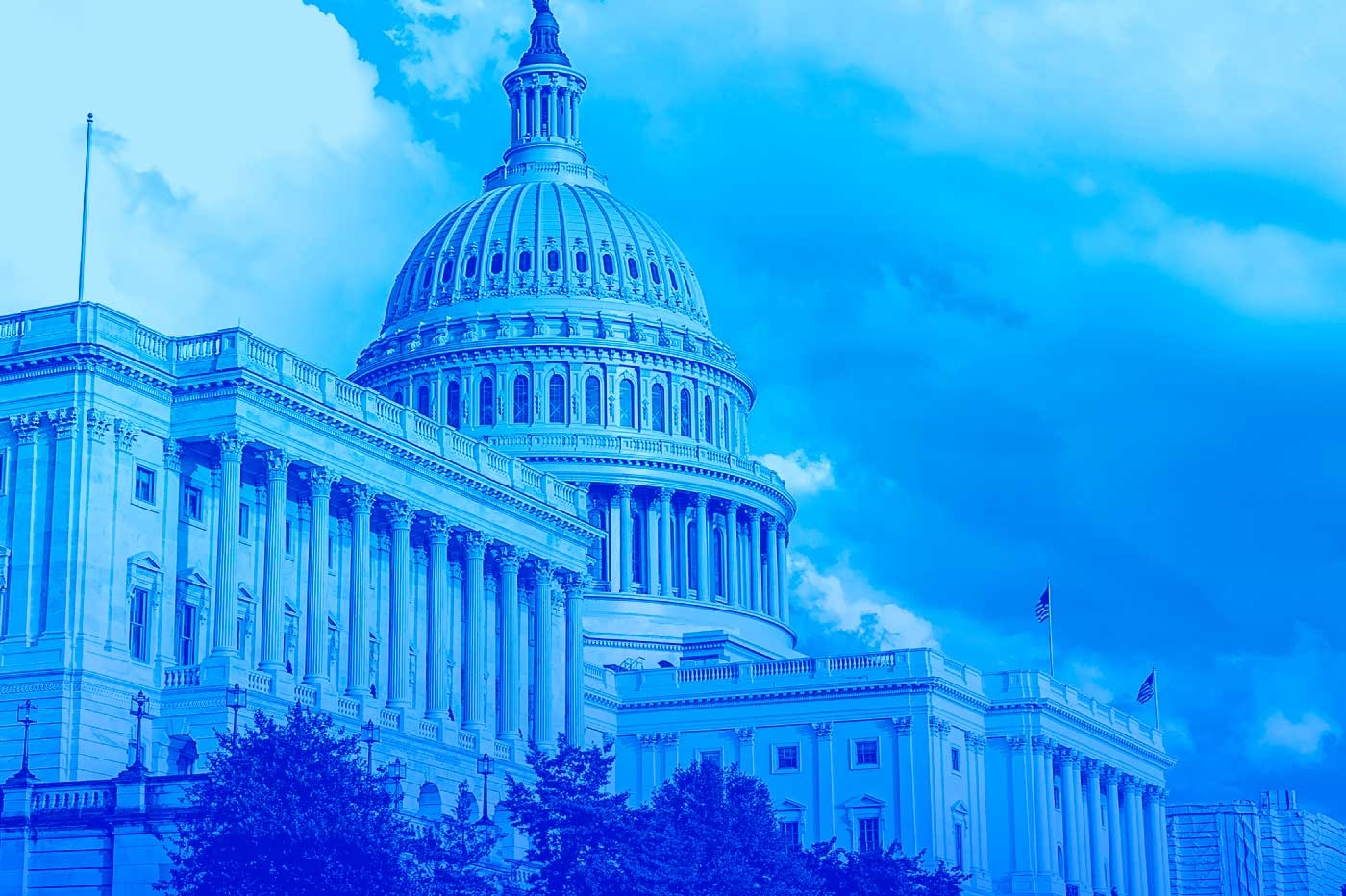As a financial planner, understanding new financial legislation is critical. So, when the “One Big Beautiful Bill Act” (H.R. 1) began making headlines, I knew it was time to dig in. And if you’re preparing for retirement—or already enjoying it—this article is for you, because you need clear answers about how this new bill will affect your taxes, your savings, and your future.
So let’s cut through the noise and take a closer look at the practical effects of this bill. I’ll break down what it means for retirement planning, seniors, estate planning, small business owners, and your healthcare coverage.
Table of Contents
Permanently Extending the 2017 Tax Cuts and Jobs Act (TCJA)
One significant feature of the One Big Beautiful Bill Act is the permanent extension of the 2017 Tax Cuts and Jobs Act (TCJA). Originally, many TCJA provisions were set to expire at the end of 2025, potentially causing a significant tax increase for most taxpayers. With the new bill, these lower tax rates, enhanced deductions, and credits continue indefinitely, offering long-term certainty in tax planning for individuals and businesses alike.
For taxpayers earning between $100,000 and $500,000 annually, this permanent extension provides notable relief. Many individuals and families in this income range benefit from ongoing lower individual income tax rates, a continued larger standard deduction, and other valuable tax breaks that would have otherwise disappeared after 2025. This helps stabilize financial planning, enabling better long-term budgeting, saving, and investing decisions.
Changes to Taxes: What Retirees Need to Know
A Larger Standard Deduction for Seniors
The One Big Beautiful Bill Act includes a significant benefit for retirees: a larger standard deduction. If you’re 65 or older, you can claim an extra $6,000 deduction on your federal taxes from 2025 through 2028. That’s right—this is on top of your existing deduction.
Why is this important? Because it directly impacts how much of your Social Security income will be taxed. Here’s how it works:
Social Security benefits become taxable when your income surpasses certain thresholds. By adding this $6,000 deduction, the bill effectively lowers your taxable income. This means fewer of your Social Security dollars will be taxed, possibly even eliminating your taxes entirely on Social Security benefits.
Let’s run through a quick example:
- Say you’re a retiree earning $25,000 in Social Security and $10,000 from a pension.
- Previously, your standard deduction was around $14,000. This left about $21,000 of taxable income.
- With the new extra $6,000 deduction, your taxable income drops to just $15,000.
- You could now pay little to no federal tax on your Social Security benefits.
Keep in mind, the deduction phases out for singles making more than $75,000 and couples above $150,000. But for many retirees, this simple change will mean more cash stays in your pocket each year.
Estate Tax Exemption: Who Really Benefits from the Changes?
The estate tax exemption under the previous law (TCJA) was already very high—$14 million per individual and nearly $28 million per married couple in 2025. The new bill raises this even further to $15 million per person, or $30 million for a married couple, starting in 2026.
Let’s be honest: this change only affects ultra-wealthy estates. Before the exemption doubled in 2017, only about 0.2% of estates had to pay any estate tax. Now, even fewer estates will pay.
What does this mean for the average retiree?
Truthfully, not much. Unless your estate is approaching $15–30 million, you won’t see any direct benefit. However, knowing these numbers can still be helpful. Understanding the exemption helps clarify whether you need complex estate planning strategies. It might even simplify your planning, allowing you to focus on other aspects like charitable giving or legacy-building that really matter to you.
Pass-Through Business Income Deduction: Good News for Business Owners
The pass-through deduction—originally created in 2017—allows business owners to deduct 20% of their business income before taxes. Think LLCs, partnerships, S-corps, or sole proprietorships. Under the new bill, this deduction increases to 23%. The bill also makes it easier for high-income earners to claim it.
Here’s why that’s a big deal:
- If you own a successful small business nearing retirement, your tax savings could significantly boost your retirement fund.
- For instance, if your business profits are $500,000, your deduction jumps from $100,000 (at 20%) to $115,000 (at 23%). That could save thousands more in taxes annually.
So in the case of the Pass-through Business Income Deduction, higher income means a larger deduction in dollars. This also means that the lion’s share of this benefit goes to the very wealthy. In fact, the top 1% of earners receive around 61% of the total pass-through deduction benefit.
If your business income falls between $500,000 to $3,000,000, you’ll likely see meaningful savings. Use this benefit strategically—perhaps reinvest in your business, boost your retirement savings, or enhance your personal financial security.
Who Sees the Most Benefits from These Tax Cuts?
There’s no avoiding it: the benefits from this bill skew heavily toward wealthier Americans, specifically those earning around $200,000. Here’s a clear breakdown of who gets the largest slices of the pie:
- Top 20% of earners (above roughly $217,000): Receive approximately 60% of total tax relief, averaging about a $12,500 tax cut annually.
- Top 5% (earning between $460,000 and $1 million): Get an average tax cut of around $21,000 each year.
- Middle-income earners: Receive an average benefit closer to $1,800 a year—still helpful, but modest by comparison.
- Lower-income earners: Typically see around a $150 tax cut, which provides minimal relief.
If you’re like most of my clients—comfortably positioned for retirement but not ultra-wealthy—you’ll experience modest relief. These savings aren’t trivial, but they’re certainly not transformative.
The Cost: Federal Spending Cuts vs. Tax Cuts
While tax cuts sound appealing, there’s an important trade-off. The bill offsets only about 30% of its tax cuts with spending reductions. In simpler terms, the government is borrowing heavily to fund these cuts.
Spending reductions mostly affect Medicaid, food assistance (SNAP), and ACA subsidies. While these cuts might not directly hit your finances, they indirectly increase risks. For instance:
- Your healthcare costs could rise indirectly as hospitals lose funding.
- Your children or grandchildren might face greater financial challenges, potentially needing your support.
This reality underscores the importance of solid retirement planning. Consider building flexibility into your financial plan to accommodate possible shifts in healthcare costs or family support.
Automatic Medicare Cuts Triggered by Deficits: What You Should Know
Here’s something you might not realize: because this bill isn’t fully paid for, existing budget laws (PAYGO rules) automatically trigger spending cuts, notably to Medicare. Without congressional action, we could see roughly $500 billion in Medicare cuts over the next decade.
Realistically, Congress typically steps in to prevent these cuts. But this isn’t guaranteed. As a retiree, you should closely follow any Medicare-related developments. Potential cuts could mean higher costs for medical care or fewer available providers. Stay informed and keep contingency plans in place.
Practical Steps to Protect Your Retirement
Given these sweeping changes, here are immediate, practical steps you should take:
- Reevaluate Your Tax Strategy: Sit down with your financial advisor to update your tax projections and ensure you’re maximizing available deductions.
- Review Your Estate Plan: Confirm whether your current estate strategy still makes sense, given the estate tax exemption changes.
- Business Owners, Revisit Your Structure: Ensure your business is positioned to benefit fully from the increased pass-through deduction.
- Health Care Contingency Plans: Prepare for potential Medicare changes by building extra flexibility into your health care budgeting.
Impact on the Federal Deficit
One important aspect of this bill is its effect on the federal deficit. Because only about 30% of the tax cuts are offset by spending reductions, the remaining 70% significantly increases the national debt. The Congressional Budget Office (CBO) projects that the bill could add roughly $3 trillion to the national deficit over the next decade.
In practical terms, this could have long-term implications such as increased interest rates, higher taxes in the future, or additional cuts to government programs. As someone planning for or enjoying retirement, being aware of this deficit impact is crucial for anticipating potential economic changes and adjusting your retirement strategy accordingly.
In Conclusion: Knowledge to Navigate the New Tax Law
The One Big Beautiful Bill Act delivers meaningful tax relief, primarily benefiting higher-income individuals and business owners. For many retirees, the direct benefits will be modest, but the indirect consequences—like potential Medicare cuts—may require careful planning.
Proactive financial planning becomes even more crucial in the face of these legislative shifts. If you’re nearing retirement or already retired, review your strategies now rather than later. Small adjustments today can secure your financial future, ensuring peace of mind during your retirement years.
If you have questions or want personalized guidance navigating these changes, I’m here to help. Schedule a consultation to ensure your retirement plans remain on track, no matter what changes come from Washington.


